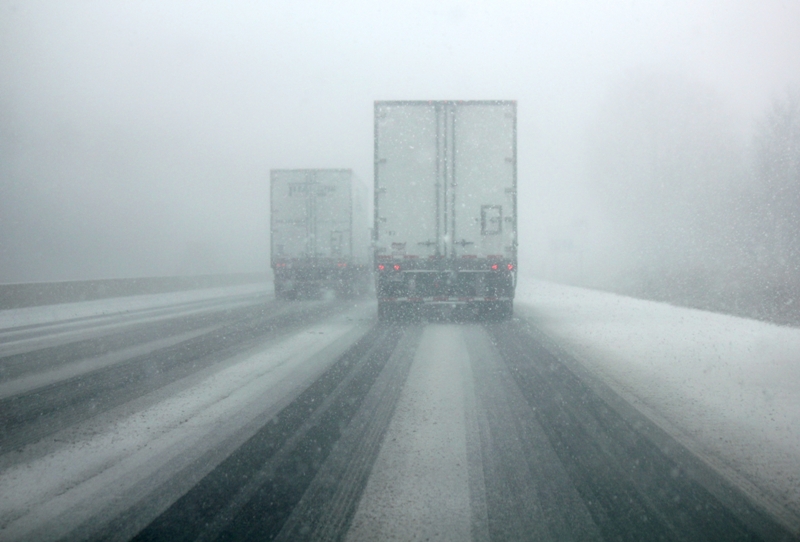In the world of trucking, the only constant is change. The trucking industry is dynamic and ever-evolving, heavily influenced by supply and demand. Because of this, the changing seasons play a pivotal role, impacting trucking companies, fleet owners, and truck drivers alike. After all, the need for goods and services increases around the holidays.
January – March: The Slow Season
As the new year begins, the trucking industry often starts on a relatively calm note. The holiday season has just concluded, and customers are finalizing their sales strategies for the year ahead. Meanwhile, carriers must search for new opportunities after the bustling holiday season.
For truck drivers, this period often translates into an extended break—a precious chance to spend time at home or embark on a well-deserved vacation. This slow season often translates to a lower paycheck for many truck drivers. The good news is that this reduction is typically temporary and balanced out during the peak season.
April – June: Business As Usual
Springtime means the return of normal trucking operations. With summer approaching, the industry gears up for an increase in load volumes. Company owners start redistributing their products based on the changing season, and fleet owners streamline their processes to make it easier for drivers to find work.
During this time, truck drivers often work regular hours and have time at home with their families. It is a time of balance, with steady paychecks and income.
July – September: The Start of Peak Season
Known as ‘The Peak Season,’ this is when things heat up in the trucking industry. Trucking companies often begin to get a surge in orders due to a higher demand for products. Fleet owners must deploy more trucks and increase the miles driven to accommodate this growing demand.
Sometimes, the demand becomes so overwhelming that supply can’t keep up. This leads to container shortages and disruptions in the supply chain. The trucking industry is in full swing this season, and everyone is raking in profits as the holiday season draws near. For truck drivers, it’s a time to cash in and secure their financial stability for the quieter months ahead.
October – December: The Busiest Season of All
The holiday season marks the height of activity in the trucking world. Companies push to fulfill last-minute orders and boost their sales figures. During this time, carriers look for high-paying loads, which can significantly bolster their earnings during the festive season.
For truck drivers, this period entails sacrificing home time for a 10 to 20 percent increase in miles driven. It’s mentally taxing, but it also significantly boosts income. As this season concludes, carriers and truck drivers start taking time off to reunite with their families, and the trucking cycle begins anew.
Other Trends in the Trucking Industry
Beyond the seasonal fluctuations, several other factors shape the trucking industry’s business landscape. In recent years, economic policies, regulation changes, and global relations shifts have all played significant roles.
- In 2018, a lower corporate tax rate fueled investments and increased freight volume in the United States.
- In 2019, regulatory changes, including increased flexibility for driver rest breaks and enhanced safety measures. Despite these improvements, freight volume dropped due to international tensions and reduced US manufacturing.
- As we entered 2020, the COVID-19 pandemic introduced unprecedented challenges.
How Do Seasonal Changes Affect Trucking Accidents?
The changing seasons also affect trucking accidents. Even though the winter months are a slow season for truckers, those on the road face weather hazards virtually every day. Icy roads, snowstorms, and reduced visibility due to fog or heavy precipitation can turn highways into treacherous stretches. These conditions increase the risk of accidents, including jackknifes, skids, and collisions.
The summer months see more trucks on the road to account for the growing supply and demand for products. However, roadwork and construction projects also kick into high gear during these months. While these improvements are necessary, they can create bottlenecks, detours, and congestion around construction zones. In heavy traffic, accidents like rear-end collisions become more common. Additionally, summer often sees an uptick in road trips and vacations, leading to increased passenger vehicle traffic. More vehicles on the road can mean more interactions between trucks and smaller cars, which can result in accidents if not managed carefully.
As the holiday season approaches, the demand for deliveries skyrockets. Truck drivers often find themselves under increased pressure to meet tight schedules, making fatigue-related accidents more likely. In a rush to meet deadlines, some drivers might not get the rest they need, leading to impaired alertness and reaction times.
Contact Our Truck Accident Attorneys
At Doubek, Pyfer & Storrar, our truck accident lawyers are here to help trucking accident victims after a serious crash. We know you need money to pay for your medical expenses, lost wages, and pain and suffering. We also know that trucking companies will fight tooth and nail to avoid paying you what you deserve. We know how to fight back.
To explore your legal options, you can either fill out a contact form on our website, and we’ll contact you, or you can call us at 406-442-7830 to answer your questions immediately. Don’t wait. Contact us today!

John Doubek and the lawyers at Doubek, Pyfer & Storrar, PLLP have legal experience in auto crashes, defective products, medical negligence, work accidents, wrongful death, insurance bad faith, business disputes, and Securities and Exchange matters.

